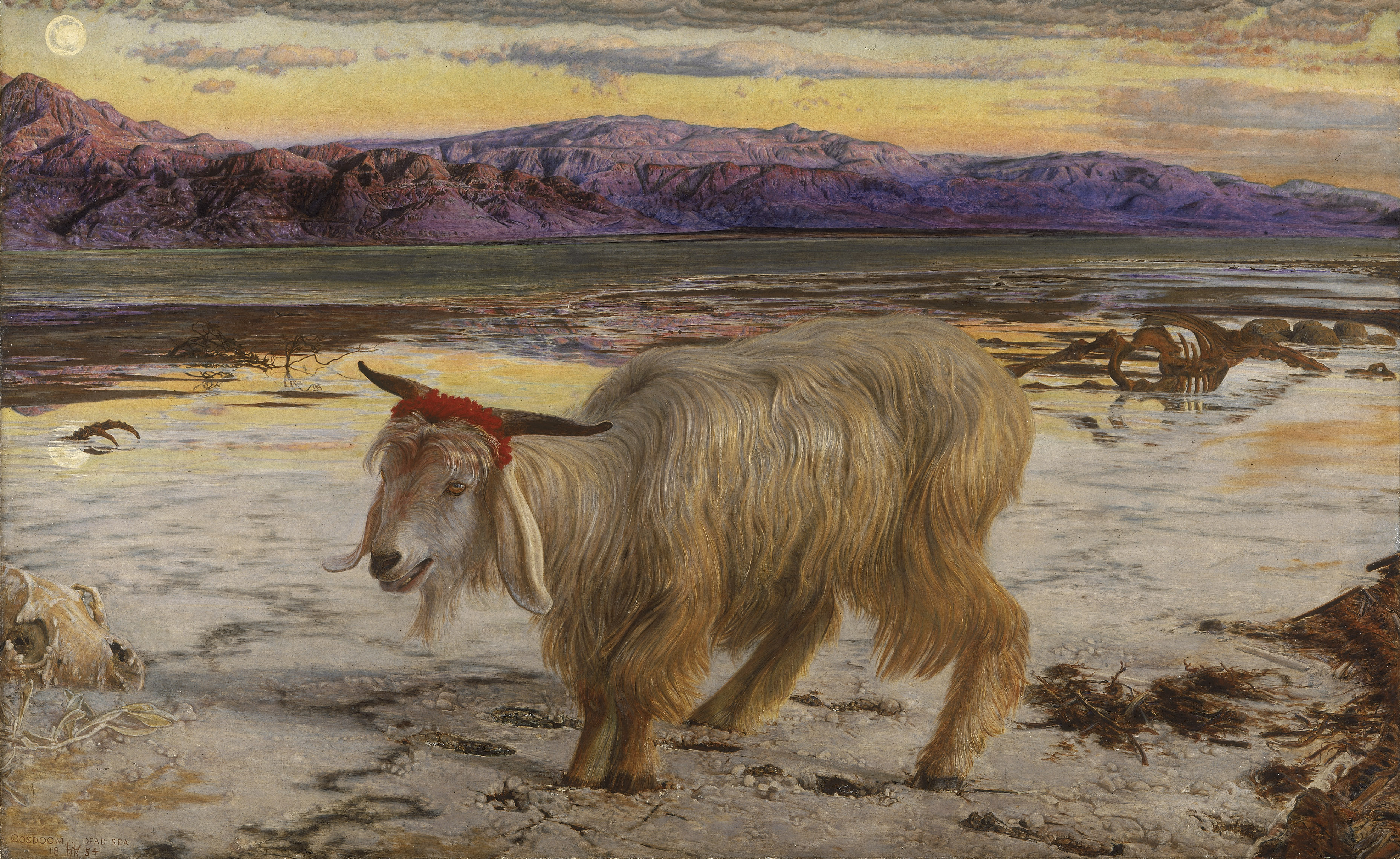Monogram (artwork) on:
[Wikipedia]
[Google]
[Amazon]
 ''Monogram'' is a Combine by American artist
''Monogram'' is a Combine by American artist
The meanings in Robert Rauschenberg's Monogram, Phaidon
/ref>
 ''Monogram'' is a Combine by American artist
''Monogram'' is a Combine by American artist Robert Rauschenberg
Milton Ernest "Robert" Rauschenberg (October 22, 1925 – May 12, 2008) was an American painter and graphic artist whose early works anticipated the Pop art movement. Rauschenberg is well known for his Combines (1954–1964), a group of artwor ...
, made from 1955-1959. It consists of a stuffed Angora goat
Angora may refer to:
Places
*Angora, the historic name of Ankara, the capital city of Turkey
*Angora, Philadelphia
**Angora (SEPTA station), a commuter rail station
*Angora, Minnesota
* Angora Township, Minnesota
*Angora, Nebraska
*Angora Lakes ...
with its midsection passing through an automobile tire
A tire (American English) or tyre (British English) is a ring-shaped component that surrounds a Rim (wheel), wheel's rim to transfer a vehicle's load from the axle through the wheel to the ground and to provide Traction (engineering), t ...
. Critic Jorg von Uthmann described it as Rauschenberg's most famous work in the Huffington Post. In 1965, Pontus Hultén
Karl Gunnar Vougt Pontus Hultén (21 June 1924 – 26 October 2006) was a Swedish art collector and museum director. Pontus Hultén is regarded as one of the most distinguished museum professionals of the twentieth century. He was the pioneering f ...
purchased the artwork for the collection of the Moderna Museet in Stockholm.
History
Rauschenberg created a series of artworks between 1954 and 1964 that merge aspects of both traditional painting and sculpture. He coined the term “ Combine” to describe this new artistic category. ''Monogram'' typifies the idea of the Combine as a free-standing sculptural artwork that also incorporates a painted canvas. The artist first saw the stuffed Angora goat in the window of a secondhand furniture store at Seventh Avenue inNew York
New York most commonly refers to:
* New York City, the most populous city in the United States, located in the state of New York
* New York (state), a state in the northeastern United States
New York may also refer to:
Film and television
* '' ...
. He bought it for $15 which was all of the money that he had on him at the time. Over the next four years (1955–1959), ''Monogram'' evolved through three different stages, which are documented in several studies and photographs. The title came from the union of the goat and tire, which reminded the artist of the interweaving letters in a monogram.
Monogram’s Multiple Forms
From 1955 to 1959, ''Monogram'' took on three different incarnations. In the first iteration (1955–1956), the goat was poised on a shelf that was connected to a wall-mounted painting that later became ''Rhyme'' (1956). According toCalvin Tomkins
Calvin Tomkins (born 17 December 1925) is an author and art critic for ''The New Yorker'' magazine.
Life and career
Tomkins was born in Orange, New Jersey. After graduating from Berkshire School, he attended Princeton University and received an un ...
, this version was eventually altered because Rauschenberg was dissatisfied that the goat could only be viewed from one side. Calvin Tomkins, Off the Wall (Garden City, N.Y. : Doubleday, 1980), p. 124.
In 1956, Rauschenberg reconstructed ''Monogram''. In this second state, the goat was encircled by a tire with its tread repainted white and was standing on a narrow wooden platform with a vertical extension at its posterior. In this second state of ''Monogram'', one side of the vertical panel is painted and collaged. Rauschenberg was unsatisfied with this version, as he felt that the goat appeared to be pulling the painting.
In the third and final incarnation of ''Monogram'' (1959), following the suggestion of Jasper Johns, Rauschenberg placed a square panel on casters on the floor and centered the goat, as if in a pasture.
Analysis
Critic Robert Hughes wrote on the work’s homoerotic themes and subtext; he claims, “One looks at it remembering that the goat is an archetypal symbol of lust, so ''Monogram'' is the most powerful image of anal intercourse ever to emerge from the rank psychological depths of modern art. Yet it is innocent, too, and sweet, and (with its cascading ringlets) weirdly dandified: a hippy goat, a few years before the 1960s. Fifty years after its creation, it remains one of the great, complex emblems of modernity, as unforgettable (in its way) as the flank of Cézanne's mountain, the cubist kitchen table or the wailing woman in ''Guernica''.” Kenneth Bendiner has interpreted the work as ‘a specific re-working’ of thePre-Raphaelite
The Pre-Raphaelite Brotherhood (later known as the Pre-Raphaelites) was a group of English painters, poets, and art critics, founded in 1848 by William Holman Hunt, John Everett Millais, Dante Gabriel Rossetti, William Michael Rossetti, James ...
painter William Holman Hunt
William Holman Hunt (2 April 1827 – 7 September 1910) was an English painter and one of the founders of the Pre-Raphaelite Brotherhood. His paintings were notable for their great attention to detail, vivid colour, and elaborate symbolism. ...
’s ''The Scapegoat''.
Art critic Catherine Craft said of the work: “Not surprisingly, ''Monogram'' shocked contemporary viewers. Still, there is also a strangely poignant beauty to its acquiescent, eternally patient goat. Some observers have associated it with an animal awaiting sacrifice. Nevertheless, with its horns and long, shimmering coat it also recalls the ''Feticci Personali'' eries of hanging ‘fetish’ assemblages of animal fur, rope, wood and various small objectsRauschenberg made in Italy."/ref>
References
{{Robert Rauschenberg 1950s sculptures Sculptures in Sweden Goats in art Works by Robert Rauschenberg Taxidermy art Collections of the Moderna Museet